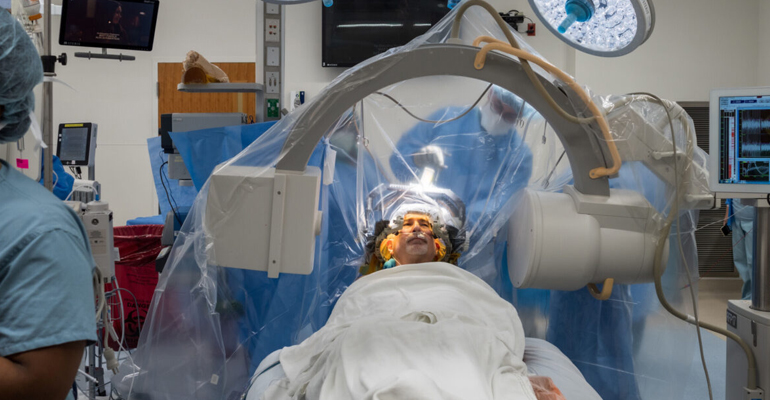

Deep Brain Stimulation (DBS) surgery is a neurosurgical procedure commonly used to treat certain movement disorders, including Parkinson's disease, dystonia, and essential tremor. DBS involves the implantation of electrodes into specific areas of the brain, followed by the placement of a neurostimulator device (similar to a pacemaker) in the chest or abdominal region. The neurostimulator delivers electrical impulses to modulate abnormal neural activity and alleviate symptoms. Here's how DBS is used for different conditions:
Parkinson's Disease:
Indication: DBS is often considered for people with advanced Parkinson's disease who experience motor fluctuations and dyskinesias despite optimal medication management.
Target Area: Subthalamic nucleus (STN) or globus pallidus internus (GPi) are commonly targeted.
Procedure: Electrodes are implanted into the selected brain region, and the neurostimulator is placed in the chest or abdomen. The device is programmed to deliver electrical stimulation, helping to control motor symptoms such as tremors, rigidity, and bradykinesia.
Dystonia:
Indication: DBS is used for primary dystonia or dystonia secondary to other conditions when medications are not providing sufficient relief.
Target Area: GPi is a common target for dystonia.
Procedure: Similar to Parkinson's disease, electrodes are implanted in the targeted brain area to modulate abnormal muscle contractions and alleviate dystonic movements.
Essential Tremor:
Indication: DBS is considered when essential tremor is severe and not responding adequately to medications.
Target Area: Thalamus (ventral intermediate nucleus or VIM) is the usual target for essential tremor.
Procedure: Electrodes are implanted in the thalamus, and stimulation is delivered to suppress tremors while preserving other motor functions.
The DBS procedure typically involves several stages:
Preoperative Evaluation: Comprehensive assessment, including neurological examinations, imaging studies (MRI or CT), and sometimes awake brain mapping.
Surgery: The patient undergoes stereotactic neurosurgery for the implantation of electrodes.
Postoperative Programming: After a recovery period, the neurostimulator is programmed to optimize symptom control while minimizing side effects.
Follow-up: Regular follow-up appointments are essential to fine-tune the stimulation parameters and monitor the patient's condition.
DBS is generally considered a reversible and adjustable treatment, offering significant improvements in motor symptoms and quality of life for many patients. However, not all individuals are suitable candidates, and careful evaluation by a multidisciplinary team is crucial to determine the appropriateness of DBS for each case.